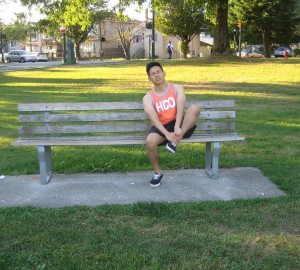For every mile that an individual walks, it places substantial stress on each foot. The feet are capable of handling a heavy load but too much stress will push them beyond their limits. Once the individual pounds on his/her feet on hard surfaces by playing sports or use shoes that irritate sensitive issues, he/she can develop heel pain which is the most common issue that affects the foot and ankle.
A sore heel typically heals on its own without surgery as long as it is allowed to rest. Nevertheless, many individuals ignore the early signs of heel pain and continue to engage in activities that caused it. Once the individual continues to walk on a sore heel, it will only worsen and can become a chronic condition which leads to more problems.

Treatment
Heel pain has various causes. If the heel feels sore, a doctor should be consulted or a specialist to determine the cause and start the appropriate treatment. The doctor will assess the heel by checking for signs of tenderness and swelling.
The individual is asked to walk, stand on one foot or perform physical tests so that the doctor can pinpoint the cause of heel pain. Certain conditions that cause heel pain can be categorized in two main groups – pain under the heel and pain at the rear of the heel.
Pain under the heel
If the individual experiences pain under the heel, he/she might have one or more conditions that inflame the tissues on the base of the foot.
- Plantar fasciitis causes pain that is centered under the heel and can be mild at first but flares up upon waking up in the morning. This can be caused by excessive running or jumping that inflames the tissue band connecting the heel bone to the base of the toes.
- Stone bruise occurs when stepping on a hard object such as stone or rock which bruises the fat pad on the base of the heel. The pain typically subsides with rest.
- Heel spurs can form where the fascia tissue band connects to the heel bone. The treatment involves rest until the pain subsides as well as performing special stretching exercises and use heel pad shoe inserts.
Pain at the rear of the heel
If there is pain at the rear of the heel, the individual might have inflamed the area where the Achilles tendon inserts into the heel bone. This can be caused by excessive running or using shoes that cut or rub into the back part of the heel. The pain at the rear of the heel slowly increases, thus causing the skin to thicken and eventually swell and turn red.
A bump at the back of the heel can develop which feels warm to the touch and tender. The pain can flare up at the start of an activity.
The treatment includes rest from activities that caused the problem, stretching exercises, using open-back shoes and pain medications. Other treatment options include the following:
- Stretch the Achilles tendon by leaning onward against a wall with the foot flat on the ground and the heel is raised with the appropriate insert.
- The doctor might recommend a 3/8” or ½” heel insert
- Apply an ice pack on the rear part of the heel to minimize inflammation
- Provide the individual with non-steroidal anti-inflammatory medications for swelling and pain.
